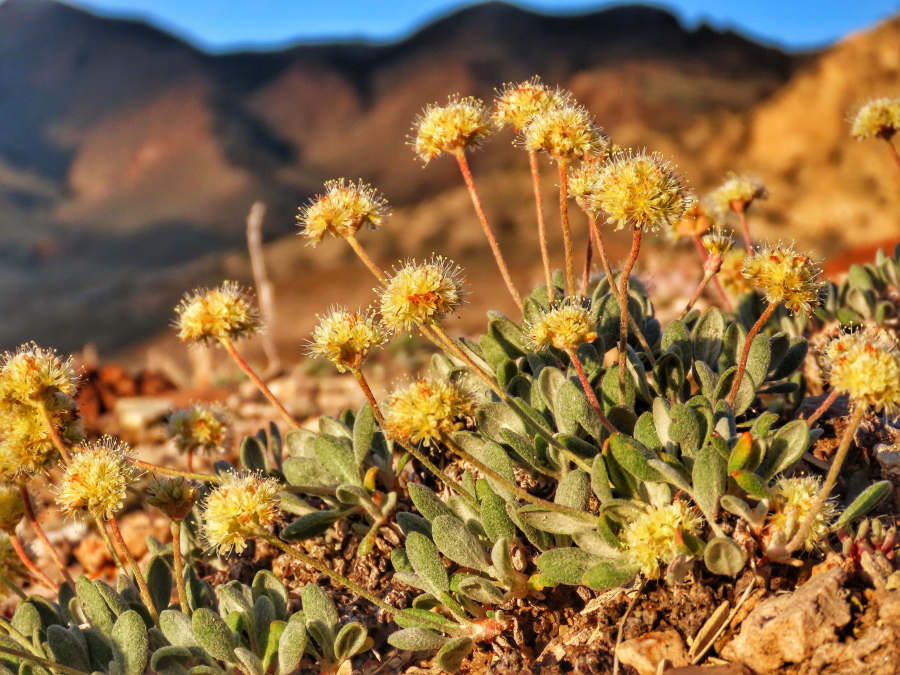RENO, Nev. — The U.S. Fish and Wildlife Service has proposed designating critical habitat for a Nevada wildflower it plans to list as endangered amid a conflict over a mine to produce lithium batteries for electric vehicles critical to the Biden administration’s plans to combat climate change.
The agency on Wednesday proposed designating critical habitat for Tiehm’s buckwheat on a high-desert ridge near the California line halfway between Reno and Las Vegas.
It’s the only place in the world the delicate, 6-inch-tall wildflower with yellow blooms is known to exist.
It’s also the site where Ioneer USA Corp. plans to build a big lithium mine.
Ioneer said the proposed designation was “an anticipated development” that “has no material impacts on our planned mining activities.”
The Australian-based company noted that mining is allowed within areas designated as critical habitat if approved by the Fish and Wildlife Service and the Bureau of Land Management.
“Ioneer has already taken this into account with its planning and proposed operations and continues to work closely with both agencies to ensure its proposed activities will not jeopardize the conservation of the species,” the company said in a statement Wednesday.
The Fish and Wildlife Service said in its formal notice of the proposed designation that “this unit is essential to the conservation and recovery of Tiehm’s buckwheat because it supports all of the habitat that is occupied by Tiehm’s buckwheat across the species’ range.”
Conservationists who sued to protect the wildflower praised the move.
“This proposed critical habitat rule sends a clear message: protecting the native range of Tiehm’s buckwheat is the only way to prevent its extinction,” said Naomi Fraga, the conservation director of the California Botanic Garden, a group that joined the Center for Biological Diversity’s 2019 petition to list the plant as endangered.
Demand for lithium worldwide is expected to double by 2025. Most of it currently comes from Australia and South America. Boosting domestic production could potentially lower the price tag on a key component of President Joe Biden’s $2 trillion climate plan: offering rebates to consumers to trade in gas-powered for electric cars.
Ioneer says its mine is expected to produce 22,000 tons of lithium — enough to power hundreds of thousands of electric vehicles annually. But the endangered species listing process has contributed to delays in its original plans to obtain all necessary permits and begin initial construction of the $785 million project before the end of last year.
Unless the Fish and Wildlife Service reverses course because of new information, the plant will be declared endangered in September based on a court order and the agency’s final listing rule in October 2021 that concluded that the wildflower may already be on the brink of extinction.
That listing triggers certain regulatory obligations, such as consulting with the service before any development or other activity that could harm the plant.
The critical habitat designation also identifies specific habitat that “may require special management and protection” — in this case “to address mineral development, road development and (off-highway vehicle) activity, livestock grazing, nonnative invasive plants species and herbivory,” the agency said.
Tiehm’s buckwheat grows on about 10 acres — an area about the size of eight football fields — at Rhyolite Ridge in the Silver Peak range west of the small community of Tonopah, about 200 miles from Reno. Fewer than 30,000 are believed to exist.
The 910 acres proposed for habitat designation — about 1.5 square miles — would provide about a 1,650-foot buffer around the plants to ensure access to bees and other pollinators.
Conservationists have argued for a buffer three times larger, while Ioneer suggested less than a tenth of the size proposed by the agency would be sufficient.
The company has said its project has a conservation strategy that includes transplanting some flowers and growing new ones with seeds it gathered as part of an experiment in greenhouses at the University of Nevada, Reno.
Conservationists said the proposed designation reaffirms their contention that won’t work, or at least pass legal muster.



